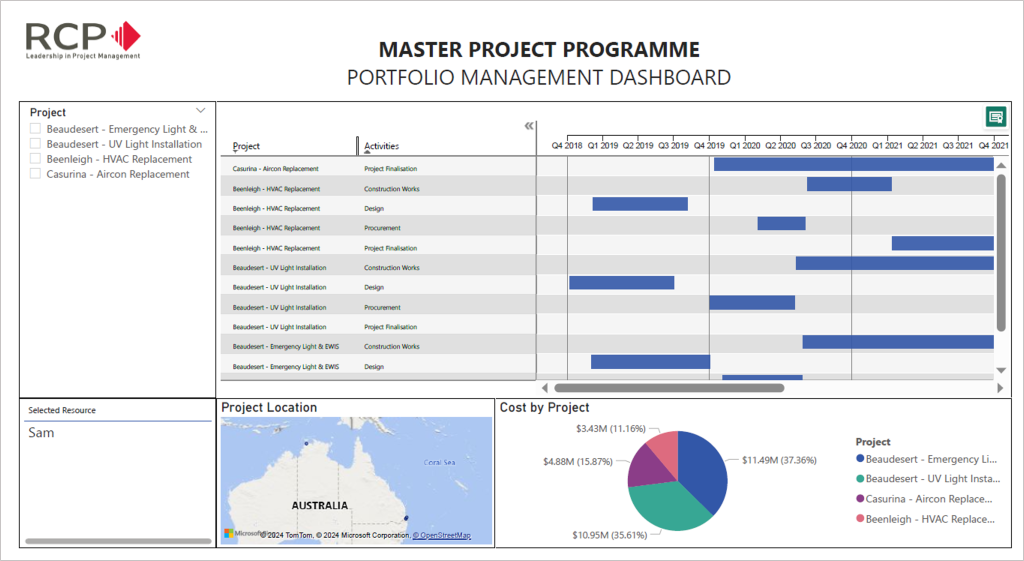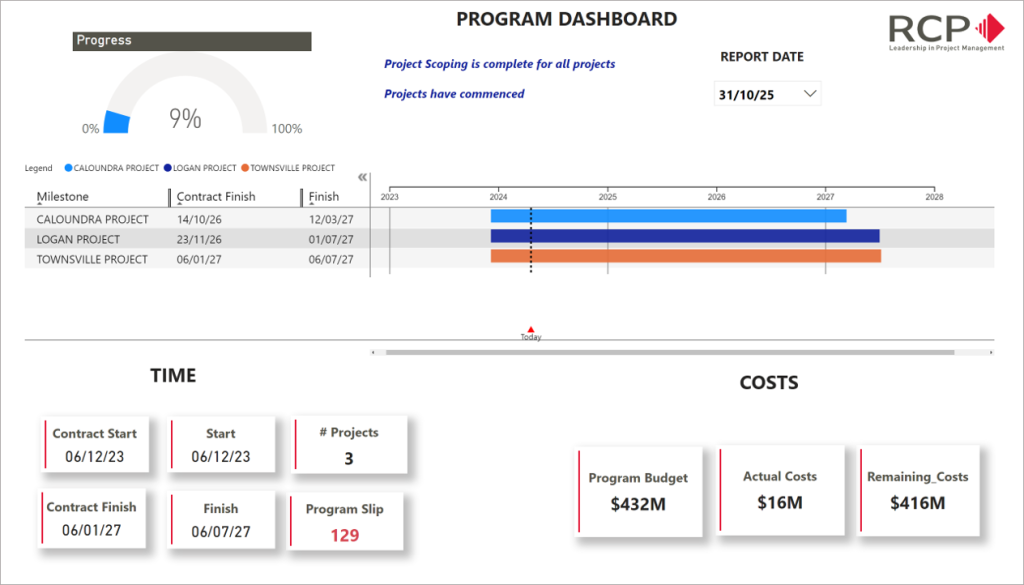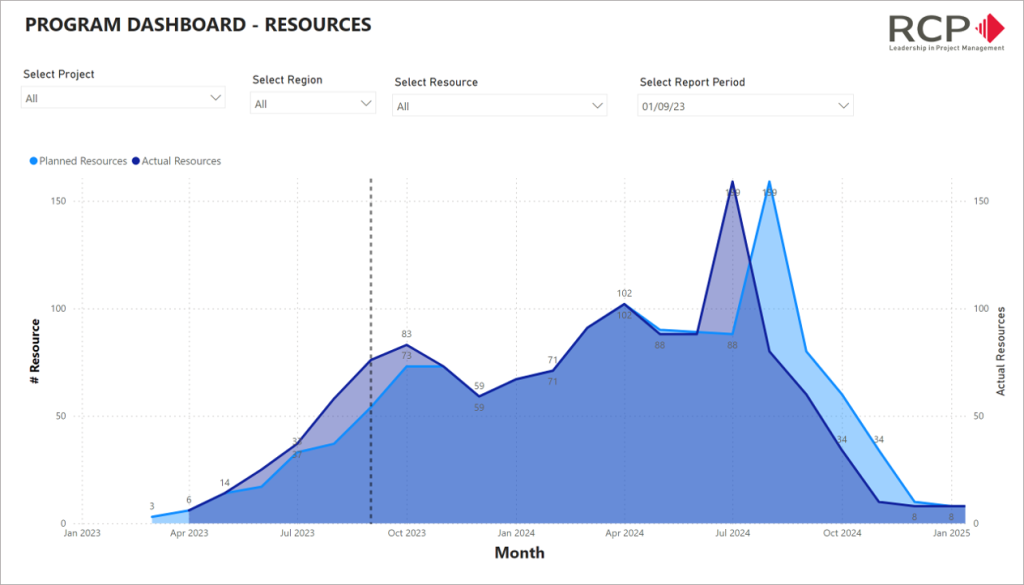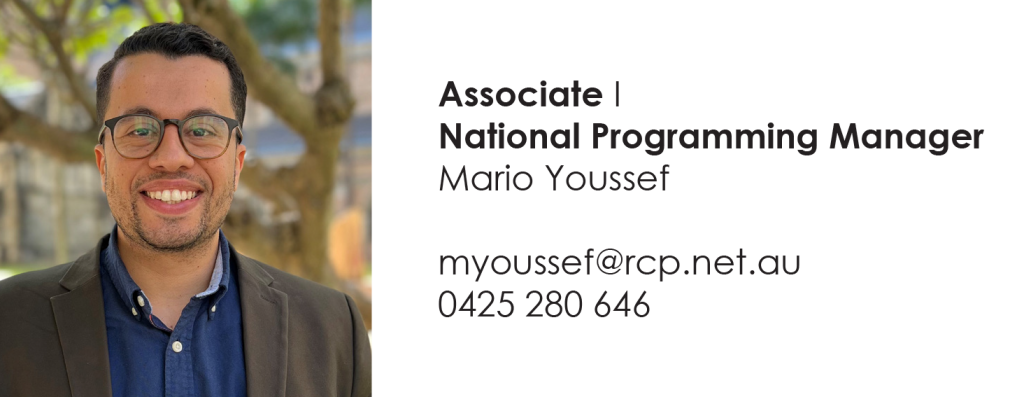
Are you tracking a project pipeline or multiple projects? With different parameters such as location, resources and at different project delivery stages?
Are you tracking this information through several spreadsheets with inconsistent information being entered by various people?
Living in fear of a fatal Excel error?
1) Engage and understand stakeholders’ deliverables.
Direct engagement with your project stakeholders is crucial to mapping out deliverables and interdependencies. This is a step that is often missed across a portfolio of projects.
Being collaborative, actively sharing information, attending workshops and meetings, and managing stakeholders will ensure the planned schedule is clearly communicated and understood by everyone.
Through these engagements, incorporate and highlight the logic dependencies, ensuring that all stakeholders are aware of the interdependencies between different tasks and activities. Incorporate design, procurement, and the delivery stages to show key milestones for all projects, including tracking key items such as FF&E requirements and resources.
Seek endorsement from all stakeholders regarding the planned dates. This process ensures all parties have a shared understanding and agreement on the proposed timeline. By gaining the buy-in and support of your stakeholders, the target completion date will be realistic and achievable.
2) Develop a framework to apply across your portfolio.
Having engaged your stakeholders and having their buy-in, develop a robust framework to map out an agreed process (i.e. road map) with critical milestones to track and to monitor all projects across your portfolio.
Building and agreeing on a framework is important to do before the implementation of a master portfolio programme. The framework allows all stakeholders to provide the required information in a uniform, consolidated manner and smoothly integrating this information into a Master Portfolio Programme.
The framework brings standardisation across your projects and tracking will be consistent across the portfolio.
3) Establish a master portfolio programme.
Keep it simple and consolidate the information on a single Master Programme. A master programme captures the framework, deliverables and resources across all projects allowing for realistic and accurate planning across the portfolio.
Managing the master programme entails regular monitoring, tracking, and updating of the programme to reflect any changes, adjustments, or new information that may arise during the preparation of the report.
By diligently managing the master programme, it will remain accurate, up-to-date, and aligned with evolving project requirements. By effectively coordinating and communicating with stakeholders, the master programme will have captured all necessary activities, dependencies, and durations. This approach helps in minimising potential delays, mitigating risks, and optimising project efficiency.
Bonus tip! Only ONE person should be responsible for updating the Master Programme to avoid mismatch of information being added from different sources.

4) Use dashboard visualisation reporting to report on your portfolio.
It can be overwhelming to track many project programmes across the portfolio on a programme. RCP uses business intelligence (BI) dashboard reporting tools to empower clients to harness the power of BI reporting.
BI or smart dashboards are a clever tool deliver and communicate detailed information from multiple sources in a single system format that can be clearly understood and acted upon.
RCP has created customised dashboards for client teams and their stakeholders to easily understand complex data and enhance the communication of this information. Depicting all data on a single dashboard page to track the progress of the Master Programme is easier to convey than pages of Gantt charts – especially to user group stakeholders.
This tool can be updated as required and can produce and report on key projects’ information such as progress performance (planned vs actual etc.).

5) Allocate resources realistically.
Using the framework, master programme and visual reporting gives your team the opportunity to better understand peaks and capacity when planning resources across the portfolio.
Reviewing and scheduling their allocation on the Master Programme you can be confident resourcing is realistic and adequate.

How can RCP help you manage your program portfolio?
RCP offers a tailored service which facilitates the management of multiple projects through master portfolio program management.
Our experienced in-house programming team develops fit-for-purpose solutions to effectively manage large and complex portfolio programs. We are currently assisting many clients including local and state governments across Australia to better manage their major health and housing project portfolios.
Contact our National Programming Manager, Mario Youssef, to find out how we can get your portfolio ducks in a row (or in a nice Gantt chart or an impressive dashboard…)
